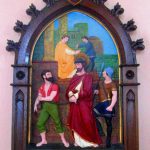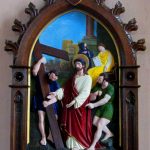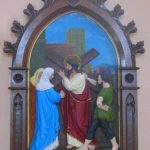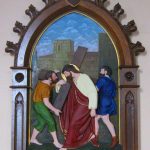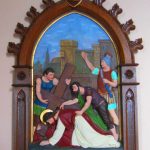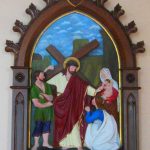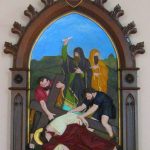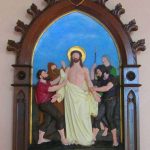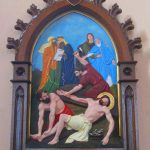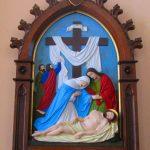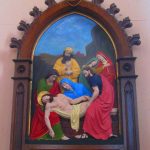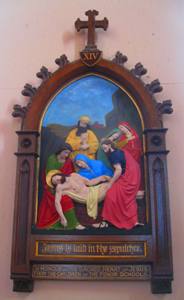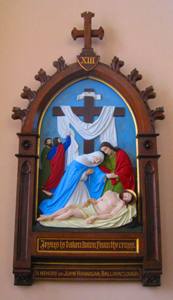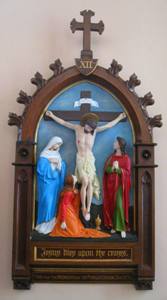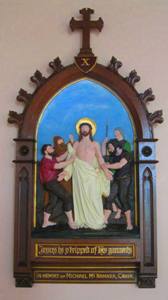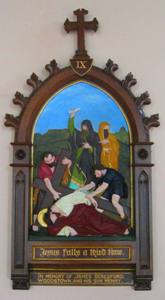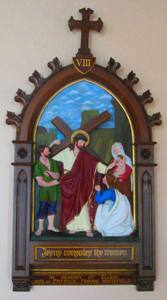The Twelfth Station
Jesus Dies Upon The Cross
In all four gospels the description of the crucifixion is brief and stark but that of Luke is particularly so –
“And when they came to the place that is called The Skull, there they crucified him”. [Luke 23:33]
The four evangelists inform us that many women were present at the crucifixion and they each name a few, but who they were is not perfectly clear. Mary Magdalene is named and so is Mary the mother of James the younger and Joseph. There are also the mother of the sons of Zebedee [i.e., James and John], Salome, and Mary the wife of Clopas. However, it is probable that two of the names refer to the same person. Strangely, only John’s gospel names Jesus’ mother. In the tableau we can easily identify Jesus’ mother but who are the other two?
Pilate’s inscription is now seen affixed to the cross. It bore the title “Jesus of Nazareth King of the Jews” and was written in Greek, Latin, and Aramaic (or Hebrew) and not, of course, in English. The inscription in the tableau simply bears the letters INRI which is the abbreviation of the Latin Iesus Nazarenus Rex Iudaeorum –
“Pilate also wrote an inscription and put it on the cross. It read, ‘Jesus of Nazareth, the King of the Jews.’ Many of the Jews read this inscription, for the place where Jesus was crucified was near the city, and it was written in Aramaic, in Latin, and in Greek”. [John 19:19-20]
The dedication at the bottom of the tableau is:
| PRAY FOR THE MEMBERS OF THE PURGATORIAN SOCIETY. |
The use of the word purgatorian here is unusual. It is rarely used as an adjective and the society is always called the Purgatorial Society as, for example, on the fourth nave window in Fenor church.

